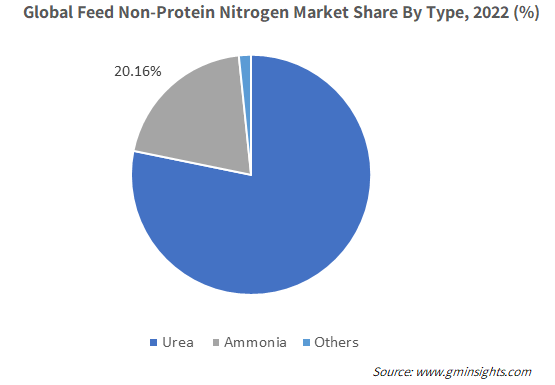Home > Animal Health & Nutrition > Feed Additives > Feed Non-Protein Nitrogen Market
Feed Non-Protein Nitrogen Market Analysis
- Report ID: GMI2134
- Published Date: Feb 2023
- Report Format: PDF
Feed Non-Protein Nitrogen Market Analysis
The feed non-protein nitrogen market size from the urea product segment is expected to cross USD 1 billion by 2032. The mounting product penetration is due to cost-effectiveness, high nitrogen content, reduced weight loss, dry roughage intake, and other benefits. In the U.S., the development of small ruminant products is also rising steadily, to address the demand from immigrants who prefer goat or sheep products over poultry and pork. These factors will generate interest in improving ruminant health management and drive the acceptance of urea as a building block for NPN production through rumen microbes.
The ruminant livestock segment will grow at 4% CAGR through 2032, considering the extensive product usage in ruminant feed for dairy production and meat processing. The dairy sector is flourishing in many regions worldwide, especially in African and Asian nations. According to the Agriculture and Horticulture Development Board, milk production is estimated to increase by over 2% per year across the globe. Such factors will also augment the adoption of urea as a common non-protein nitrogen source for ruminants, considering the low cost and high palatability over alternative sources.
The Asia Pacific feed non-protein nitrogen market value will be worth USD 790 million by 2032, given the large cattle population and the extensive support for livestock operations. For example, over the last three years, requests to the World Bank for support of livestock production have risen from an average of USD 150 million annual lending to over USD 700 million per year, with major growth recorded in South Asia and Central Asia, among other regions. Furthermore, the robust growth of the animal husbandry sector in many Asian countries will augment NPN adoption in animal feed formulations across the region.

